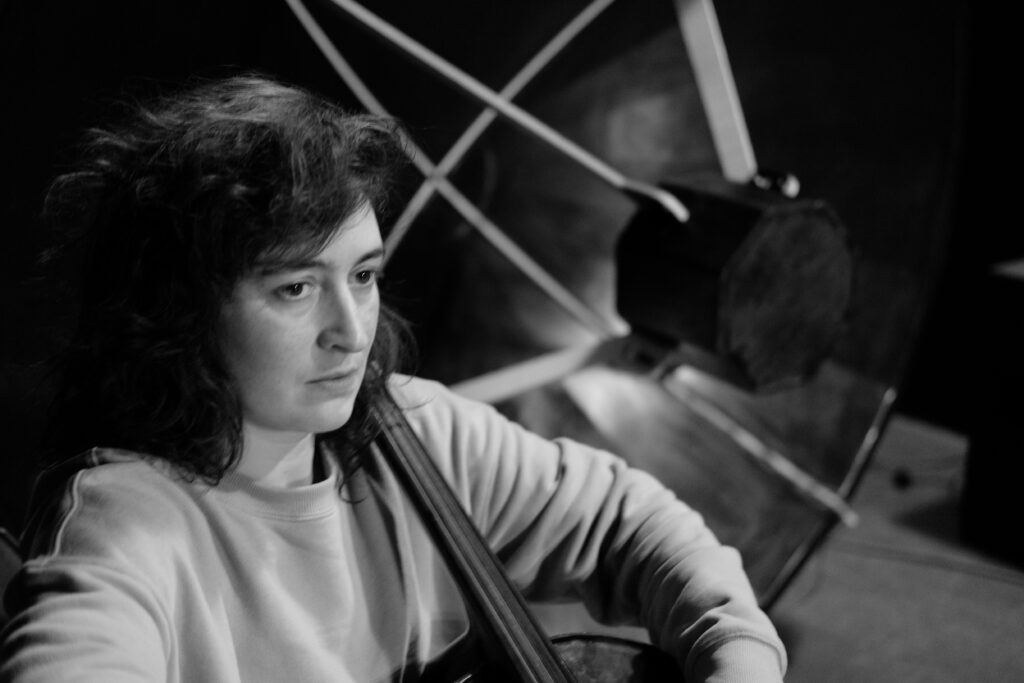
Anthea Caddy’s work interrogates spatial energy and its physical propagation and subsequent projection within materials. Her investigations result in installation and performance works within unusual environments that utilise specialised loudspeaker and amplification media to expand and reveal spatial phenomena within the environments we inhabit.
Your work deals with spatial energy and its physical propagation and subsequent projection within materials. Can you describe your interest in this field and how you translate it into artistic practice?
I have always had a fascination with the spatiality of sound; where it amasses, oscillates and where that vibration moves and transduces. Following the ‘signal’ so to speak has been my way of navigating artwork production; as an experiment of what can happen when you do, from the material through to the physiological, the entire system of energy propagation. Projection has been a major element of this and the spatial phenomena it produces; by following the system of sound propagation and using specialised media, be it an acoustic instrument, microphones, accelerometers and speakers and other vibratory devices to create sound, I follow the pathways of this energy and attempt to harness it spatially to see and hopefully reveal what phenomena it produces within a given environment.
You also work in unusual environments. Can you talk about some, and which has stayed in your mind as the most unusual ones?
The ones that come to my mind right now are probably the Bogong Hydro Electricity Dam Wall in the Victorian Alps in Australia with a soundfield microphone, an old tin oil drum with the most complex acoustic reflections I have ever experienced with fellow artist Felicity Mangan at the MoKS Residency in Mooste, Estonia, and probably the project I did last year with B.J Nilsen at the vast and quite atmospheric abandoned Grabowsee Sanatorium in Oranienburg in Germany. What also fascinated me early on was exploring the acoustic extremes in scientifically controlled environments, such as the CSIRO anechoic chamber in Melbourne, Australia and a ten second reverb chamber in an architectural physics research laboratory at the University.
Does your work have any environmental – ecological ramifications in your opinion?
Yes, my recent work and upcoming projects have explored and attempted to reveal various physical phenomena produced from the natural environment. In particular large scale climatic events occurring across the globe. My most recent work ‘Love Numbers’ an installation commissioned by Sonic Acts and the Venice Music Biennale in collaboration with artist Marcin Pietruszewski explored the spatiality of tidal patterns of the earth and their relationship to the moon and sun. I am particularly interested in how we can use spatiality produced by energy states to explore the unseen and inaudible; specifically large scale events that can produce and propagate various physical phenomena on a global and cosmological scale. I think creating an awareness of the environment through art production can play an important political role in today’s current climate debate.
What about psychogeography – genius loci, of a certain place – how does that come into the equation in practice?
If by psychogeography one means understanding our environment through the exploration of space by using spatial phenomena to navigate and highlight aspects unseen, then yes, I am fascinated by it. I strongly believe that sound as an energy can reveal many elements of our daily life and environment that usually remain unnoticed and offer an alternative way of viewing multiple aspects of our society. For example and in particular, borders, walls, all the materials that humans use to create and demarcate control within society. Sound energy, through vibrational states and propagation, has the ability to cross multiple human boundaries and vast spaces, in both air and extremely solid materials. This is something that is a recurring theme in my work; sound energy traverses these physical and psychological boundaries within our bodies and the environments we inhabit.
Which parts of your work as an artist do you feel are most challenging, and which are the most rewarding?
Sometimes I find it hard to articulate my work. It is extremely difficult to explain and represent spatial work, such as my directional speaker works to people who haven’t physically experienced them before. It’s hard to telegraph….
The most rewarding for me are site visits, testing ideas and technology and connecting the theoretical with the media and it all working in a successful artwork.
What projects are you working on at the moment?
I am working on the next iteration of my Long Throw Series for 2025 in Berlin, a collaboration with Dr. Felix Fischer at the Charité Hospital in Berlin exploring the spatial aspects of depression data collected over the pandemic period in Europe, a new installation work that explores seismic events across the earth with the curator Davorka Begovic at Kontejner in Zagreb and a large scale work in collaboration with Miodrag Gladovic and B.J. Nilsen exploring air turbulence and atmospheric pressure, and hopefully finishing my Phd that was put on hold due to the pandemic.
Interview Lucia Udvardyova
Photo Lucas van der Velden